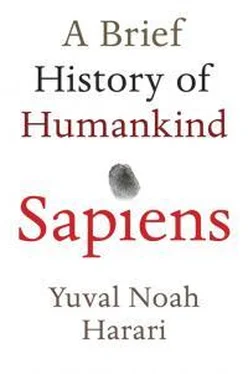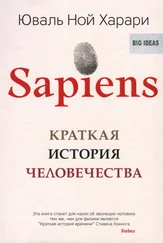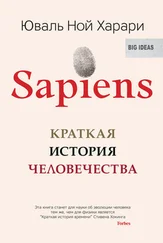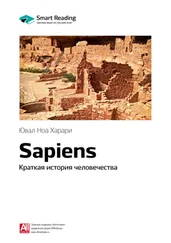As recently as the nineteenth century, the best doctors still did not know how to prevent infection and stop the putrefaction of tissues. In field hospitals doctors routinely cut off the hands and legs of soldiers who received even minor limb injuries, fearing gangrene. These amputations, as well as all other medical procedures (such as tooth extraction), were done without any anaesthetics. The first anaesthetics – ether, chloroform and morphine – entered regular usage in Western medicine only in the middle of the nineteenth century. Before the advent of chloroform, four soldiers had to hold down a wounded comrade while the doctor sawed off the injured limb. On the morning after the battle of Waterloo (1815), heaps of sawn-off hands and legs could be seen adjacent to the field hospitals. In those days, carpenters and butchers who enlisted to the army were often sent to serve in the medical corps, because surgery required little more than knowing your way with knives and saws.
In the two centuries since Waterloo, things have changed beyond recognition. Pills, injections and sophisticated operations save us from a spate of illnesses and injuries that once dealt an inescapable death sentence. They also protect us against countless daily aches and ailments, which premodern people simply accepted as part of life. The average life expectancy jumped from around twenty-five to forty years, to around sixty-seven in the entire world, and to around eighty years in the developed world. 8
Death suffered its worst setbacks in the arena of child mortality. Until the twentieth century, between a quarter and a third of the children of agricultural societies never reached adulthood. Most succumbed to childhood diseases such as diphtheria, measles and smallpox. In seventeenth-century England, 150 out of every 1,000 newborns died during their first year, and a third of all children were dead before they reached fifteen. 9Today, only five out of 1,000 English babies die during their first year, and only seven out of 1,000 die before age fifteen. 10
We can better grasp the full impact of these figures by setting aside statistics and telling some stories. A good example is the family of King Edward I of England (1237–1307) and his wife, Queen Eleanor (1241–90). Their children enjoyed the best conditions and the most nurturing surroundings that could be provided in medieval Europe. They lived in palaces, ate as much food as they liked, had plenty of warm clothing, well-stocked fireplaces, the cleanest water available, an army of servants and the best doctors. The sources mention sixteen children that Queen Eleanor bore between 1255 and 1284:
1
. An anonymous daughter, born in 1255, died at birth.
2
. A daughter, Catherine, died either at age one or age three.
3
. A daughter, Joan, died at six months.
4
. A son, John, died at age five.
5
. A son, Henry, died at age six.
6
. A daughter, Eleanor, died at age twenty-nine.
7
. An anonymous daughter died at five months.
8
. A daughter, Joan, died at age thirty-five.
9
. A son, Alphonso, died at age ten.
10. A daughter, Margaret, died at age fifty-eight.
11. A daughter, Berengeria, died at age two.
12. An anonymous daughter died shortly after birth.
13. A daughter, Mary, died at age fifty-three.
14. An anonymous son died shortly after birth.
15. A daughter, Elizabeth, died at age thirty-four.
16. A son, Edward.
The youngest, Edward, was the first of the boys to survive the dangerous years of childhood, and at his fathers death he ascended the English throne as King Edward II. In other words, it took Eleanor sixteen tries to carry out the most fundamental mission of an English queen – to provide her husband with a male heir. Edward II’s mother must have been a woman of exceptional patience and fortitude. Not so the woman Edward chose for his wife, Isabella of France. She had him murdered when he was forty-three. 11
To the best of our knowledge, Eleanor and Edward I were a healthy couple and passed no fatal hereditary illnesses on to their children. Nevertheless, ten out of the sixteen – 62 per cent – died during childhood. Only six managed to live beyond the age of eleven, and only three – just 18 per cent – lived beyond the age of forty. In addition to these births, Eleanor most likely had a number of pregnancies that ended in miscarriage. On average, Edward and Eleanor lost a child every three years, ten children one after another. It’s nearly impossible for a parent today to imagine such loss.
How long will the Gilgamesh Project – the quest for immortality – take to complete? A hundred years? Five hundred years? A thousand years? When we recall how little we knew about the human body in 1900, and how much knowledge we have gained in a single century, there is cause for optimism. Genetic engineers have recently managed to double the average life expectancy of Caenorhabditis elegans worms. 12Could they do the same for Homo sapiens ? Nanotechnology experts are developing a bionic immune system composed of millions of nano-robots, who would inhabit our bodies, open blocked blood vessels, fight viruses and bacteria, eliminate cancerous cells and even reverse ageing processes. 13A few serious scholars suggest that by 2050, some humans will become a-mortal (not immortal, because they could still die of some accident, but a-mortal, meaning that in the absence of fatal trauma their lives could be extended indefinitely).
Whether or not Project Gilgamesh succeeds, from a historical perspective it is fascinating to see that most late-modern religions and ideologies have already taken death and the afterlife out of the equation. Until the eighteenth century, religions considered death and its aftermath central to the meaning of life. Beginning in the eighteenth century, religions and ideologies such as liberalism, socialism and feminism lost all interest in the afterlife. What, exactly, happens to a Communist after he or she dies? What happens to a capitalist? What happens to a feminist? It is pointless to look for the answer in the writings of Marx, Adam Smith or Simone de Beauvoir. The only modern ideology that still awards death a central role is nationalism. In its more poetic and desperate moments, nationalism promises that whoever dies for the nation will forever live in its collective memory. Yet this promise is so fuzzy that even most nationalists do not really know what to make of it.
The Sugar Daddy of Science
We are living in a technical age. Many are convinced that science and technology hold the answers to all our problems. We should just let the scientists and technicians go on with their work, and they will create heaven here on earth. But science is not an enterprise that takes place on some superior moral or spiritual plane above the rest of human activity. Like all other parts of our culture, it is shaped by economic, political and religious interests.
Science is a very expensive affair. A biologist seeking to understand the human immune system requires laboratories, test tubes, chemicals and electron microscopes, not to mention lab assistants, electricians, plumbers and cleaners. An economist seeking to model credit markets must buy computers, set up giant databanks and develop complicated data-processing programs. An archaeologist who wishes to understand the behaviour of archaic hunter-gatherers must travel to distant lands, excavate ancient ruins and date fossilised bones and artefacts. All of this costs money.
Читать дальше



![Юваль Ной Харари - Sapiens. Краткая история человечества [litres]](/books/34310/yuval-noj-harari-sapiens-kratkaya-istoriya-cheloveche-thumb.webp)





![Юваль Ной Харари - 21 урок для XXI века [Версия с комментированными отличиями перевода]](/books/412481/yuval-noj-harari-21-urok-dlya-xxi-veka-versiya-s-ko-thumb.webp)


